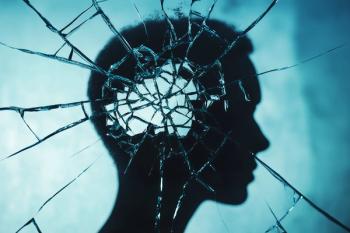
- Vol 38, Issue 11
Schizophrenia in the Emergency Department: Psychologically and Psychodynamically Informed Practices
Although
With our combined experience as an emergency medicine physician with interest in the management of acute psychiatric presentations (Furiato) and a psychotherapist with interest in the psychotherapy of schizophrenia (Ruffalo), we believe a psychologically (and psychodynamically) informed guide to the management of schizophrenia in the ED that incorporates relevant research from pharmacotherapy, psychology, and
Is It Really Schizophrenia?
Attempts to distinguish schizophrenia from the psychotic symptoms that occur in other mental and medical disorders date at least to Kraepelin’s pioneering work in the late 1800s. Another German psychiatrist, Kurt Schneider, proposed the “first-rank symptoms” of schizophrenia in 1939, and his theory held widespread popularity throughout the 20th century (
Patients presenting to EDs may be well-known to ED staff; the course of schizophrenia is generally chronic and, in many geographic regions of the United States, comprehensive mental health systems are sorely lacking. In cases wherein the patient is a poor historian, or past records are otherwise unable to be obtained, reliance on clinical skill, such as knowledge of FRS, is necessary to ascertain the diagnosis of
In certain instances, such as a clinical suspicion of new-onset schizophrenia or abnormal neurologic exam findings, use of brain imaging may be necessary to rule out organic disease of the nervous system. While a comprehensive review of brain imaging in psychosis is outside of the scope of this paper, Coentre et al2 note that neuroimaging is particularly useful in first-episode psychosis when patients are elderly, have neurological symptoms, or have an atypical clinical picture.
Leveraging Psychopharmacology
In the ED setting, the first and most important consideration upon presentation of the acutely agitated patient with psychosis or schizophrenia is the level of risk of harm they pose to themselves and staff.3 The resulting answer will help determine the route and type of medication for the specific patient. Speed of onset can dictate the route of administration, as those who are violent will need more rapid calming. These therapies should be used with verbal de-escalation techniques or directly after such attempts have failed.
Benzodiazepines, which are pharmacologically active on the gamma-aminobutyric acid (GABA) receptors, act on the central nervous system and are among the most common medications used for calming and sedation in the ED.4 The largest concentrations exist in the thalamus, cortex, and cerebellum. There are many different subclasses of GABA receptors, including the main α- and β- subunits. The biochemical neurotransmitter effects include reversable binding of the excitatory neuroreceptors and neuronal firing. The primary clinical effects are anxiolysis,
Patients who are successfully verbally calmed and de-escalated can be considered for therapy with oral management with benzodiazepines alone or in combination with antipsychotics. Intramuscular medications combined with antipsychotics, often with the help of physical restraints, are used for those patients who cannot be de-escalated and pose a risk of injury to themselves and staff.
The 2 main categories of antipsychotics in the emergency setting are first-generation (typical) and second-generation (atypical) agents. The class distinctions are mostly important because of the associated adverse effects.5 First-generation antipsychotics were developed for the treatment of schizophrenia; they act on the multiple dopaminergic receptor, anticholinergic, and histamine pathways. Each drug has its own mechanism of action and level of antagonism of those pathways.
The hallmark first-generation drug is haloperidol, commonly used in the ED. It has been used with great success in treating the positive symptoms of schizophrenia. One of its main limitations, and ultimately a reason that prompted the development of the second-generation drug class, consists of extrapyramidal symptoms such as tremor, slurred speech, akathisia, dystonia, and
The second-generation class of medications further treats the negative symptoms of schizophrenia and improves upon the adverse event profile of the first-generation group.5 Olanzapine and ziprasidone are common second-generation antipsychotics used in the ED. Significant adverse event of the second-generation drugs include sedation, hypotension,
Many of the antipsychotics can be administered by mouth to those who are receptive to such and calm enough for safe administration. Antipsychotics can also be administered by intramuscular and intravenous injection for those who are severely agitated.3 Careful observation of the patient’s respiratory status by cardiac monitoring and continuous pulse oximetry must be done after administration, as adverse event can also include respiratory depression and hypoxia. The regular combination of benzodiazepines and antipsychotics can compound this risk. In addition, many of the antipsychotics can have adverse cardiac electrophysiologic effects, including prolonged QT intervals and the development of ventricular tachycardic arrythmias, necessitating electrocardiogram screening once the patient is chemically calmed.
Common combinations of
In the prehospital and ED literature,
Psychologically Informed Management
Schizophrenia is a complex, multidimensional problem that requires appreciation of both biomedical and psychosocial aspects of disease management. This is true not only in the psychiatric treatment setting but also in the ED, since patients with schizophrenia may exhibit the most severe symptoms in the acute care setting.
Of greatest importance, perhaps, is the recognition that the patient’s heightened state of
Any attempt to challenge or question the validity of delusional themes will result in utter failure, so the ED clinician must avoid these types of confrontations. At the same time, the clinician should not tacitly agree with the patient’s deluded ideas but instead explain empathically that there are reasons they are experiencing things differently. Again, the clinician must do everything they can to foster an environment in which some semblance of trust can be established. For the patient who is mute or otherwise difficult to engage in an interview, speaking about neutral subjects, such as the weather or sports, may help alleviate anxiety and open up the patient to answering some basic questions.
While it is, of course, necessary to gather some information from the patient to establish a history and determine appropriate disposition, the patient with schizophrenia may experience too many questions as an imposition. As Silvano Arieti, MD, noted, “The request for information is often interpreted by the patient as ‘an attempt to take something from him.’”9 The aim of the ED interview should be less the collection of detailed information and more of a process of relating to the patient, while gathering an assessment of current symptoms, an attempt to relay a sense of warmth, security, and trust which will serve as the foundation for ongoing treatment.
As previously discussed, the administration of psychotropic medications in the ED is sometimes necessary to stabilize an aggressive or violent patient. In these cases, the ED physician and mental health professional should maximize the patient’s sense of autonomy and self-determination; for example, the staff can allow the patient to choose the route of administration. Most likely, the patient feels that they have been violated in some way—either due to intrusive voices, paranoia, somatic delusions, or some other terrifying symptom—so the ED clinician should attempt to avoid coercion to the greatest degree possible.
Lastly, in many cases of schizophrenia, psychotic symptoms are ongoing, sometimes in spite of good pharmacological and psychotherapeutic management. The mere presence of psychotic symptoms in a patient who experiences such symptoms at baseline does not warrant
Concluding Thoughts
Schizophrenia is a complex, disabling condition that presents a challenge to psychiatric and emergency medicine providers alike. Due in part to the lack of a comprehensive mental health system in the United States, patients with schizophrenia frequently present to the ED for diagnosis, treatment, and acute stabilization. Knowledge of diagnostic, pharmacological, and psychosocial elements of schizophrenia is essential for competent ED care. Of chief importance is the recognition that the patient with psychosis is in a psychologically vulnerable state, worsened by anxiety, and improved with understanding, empathy, and evidence-based symptom management.
Dr Furiato is the program director of the emergency medicine residency at Brandon Regional Hospital and an assistant professor of emergency medicine at the University of South Florida Morsani College of Medicine in Tampa, Florida. He currently practices emergency medicine and specializes in substance use disorder care in the emergency department setting in Brandon, Florida. Dr Ruffalo is an instructor of psychiatry at the University of Central Florida College of Medicine in Orlando, and an adjunct instructor of psychiatry at Tufts University School of Medicine in Boston, Masschusetts. He is a psychoanalytic psychotherapist in private practice in Tampa.
References
1. Soares-Weiser K, Maayan N, Bergman H, et al.
2. Coentre R, Silva-Dos-Santos A, Talina MC.
3. Marx JA, Rosen P. Rosen’s Emergency Medicine: Concepts and Clinical Practice. 8th ed. Elsevier/Saunders; 2014.
4. Griffin CE III, Kaye AM, Rivera Bueno F, Kaye AD.
5. Abou-Setta AM, Mousavi SS, Spooner C, et al. First-generation versus second-generation antipsychotics in adults: comparative effectiveness. In: Comparative Effectiveness Reviews, No. 63. Agency for Healthcare Research and Quality (US); 2012. Accessed August 11, 2021.
6. Campillo A, MacDonald KS, Vilke GM, Wilson MP. The B52 combination is not frequently used in emergency departments and causes a high proportion of patients to fall asleep. Ann Emerg Med. 2012;60(4):S147.
7. Lebin JA, Akhavan AR, Hippe DS, et al.
8. Arieti S. Interpretation of Schizophrenia. 2nd ed. Basic Books; 1974.
9. Arieti S. Individual psychotherapy of schizophrenia. In: Arieti S, ed. American Handbook of Psychiatry. Basic Books; 1974. ❒
Articles in this issue
about 4 years ago
PTSD in Late Life: An Update on Clinical Issuesabout 4 years ago
Heal Thyself, Then Heal Others? The Power of Lived Experiencesabout 4 years ago
Mirrors and Jeweled Netsabout 4 years ago
Psychiatric Views on the Daily Newsabout 4 years ago
Majority of Americans Favor President’s Vaccine Mandate: Pollabout 4 years ago
Sorting Out Comorbiditiesabout 4 years ago
Listening to Terry GrossNewsletter
Receive trusted psychiatric news, expert analysis, and clinical insights — subscribe today to support your practice and your patients.













